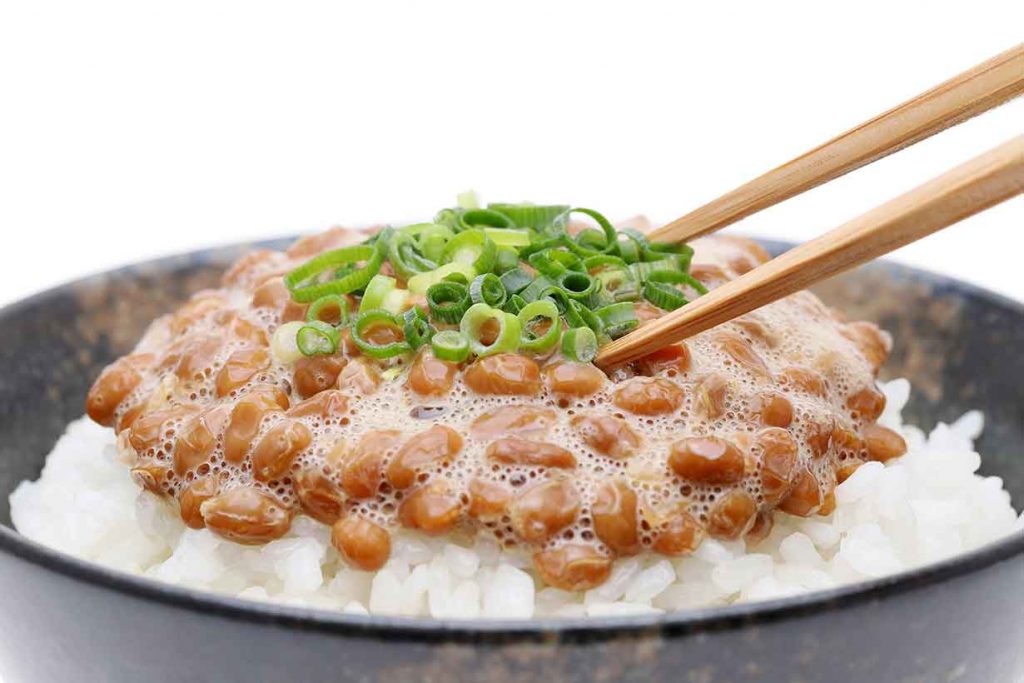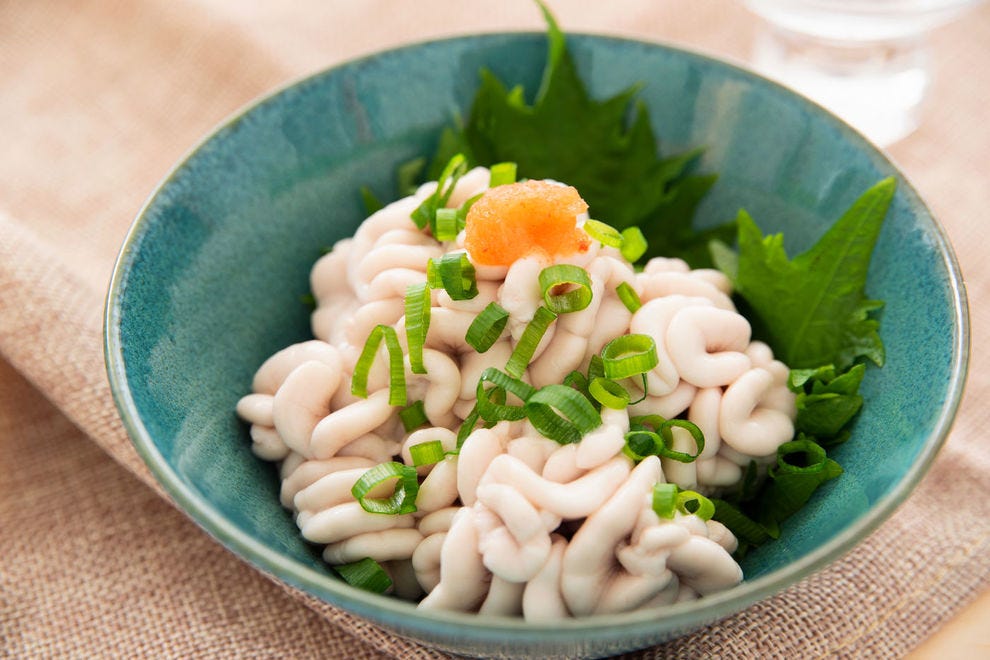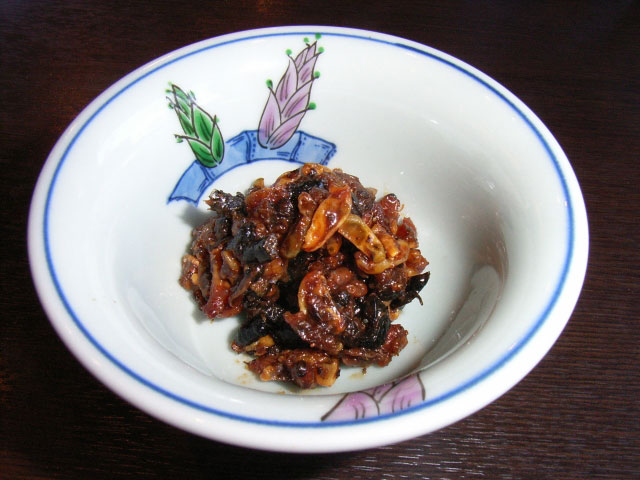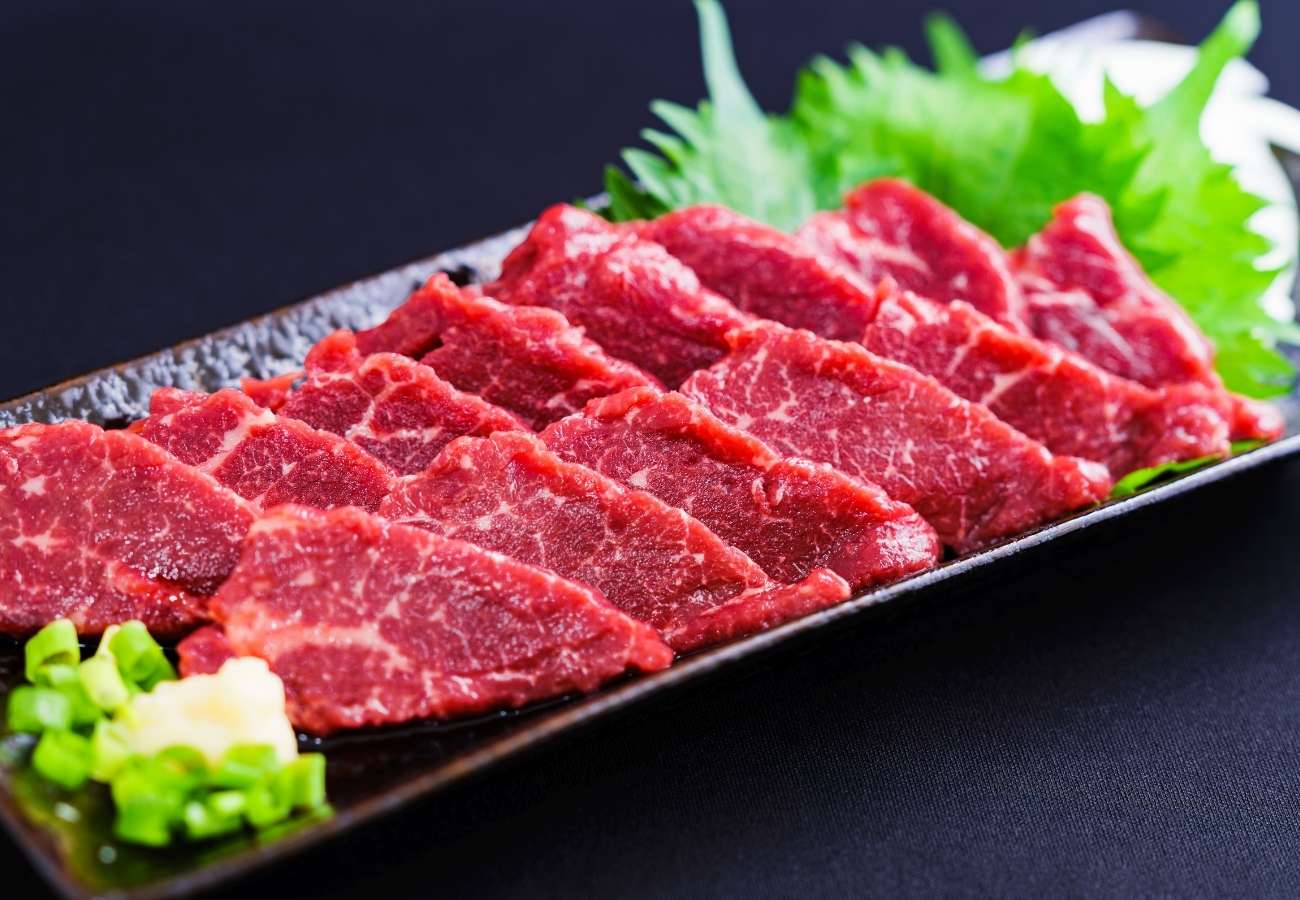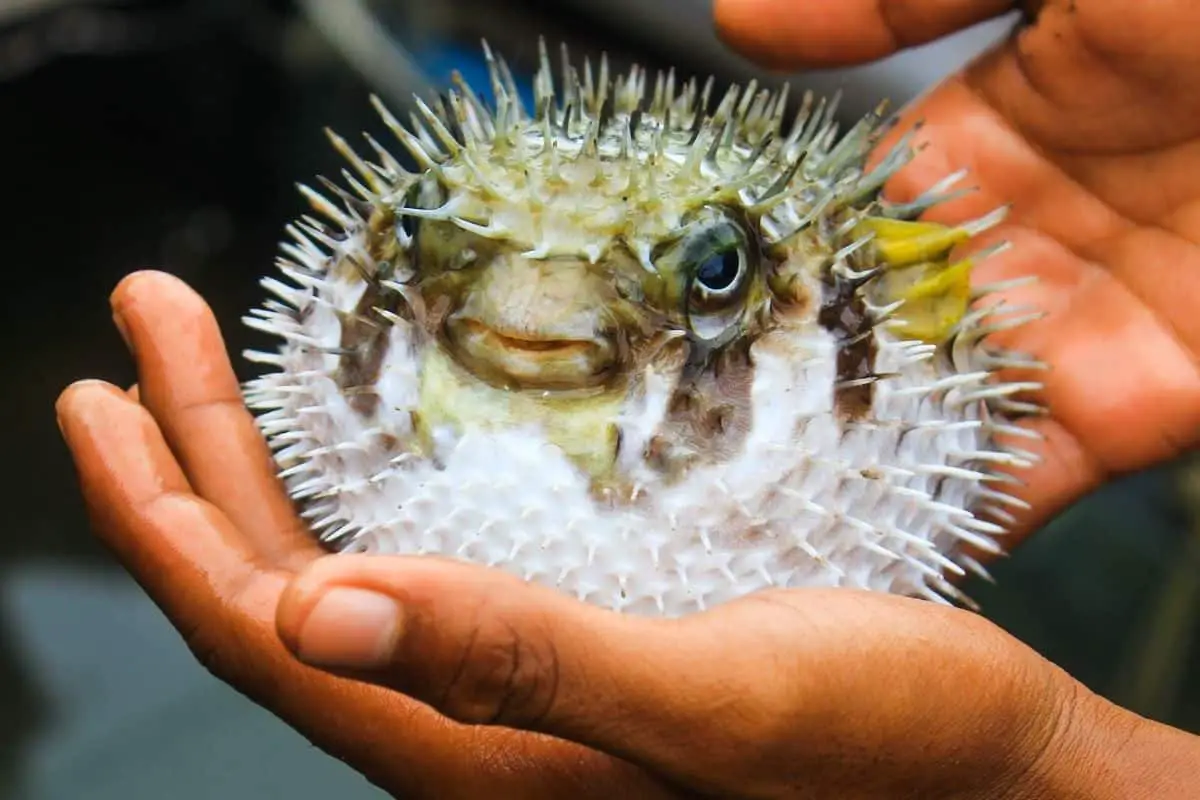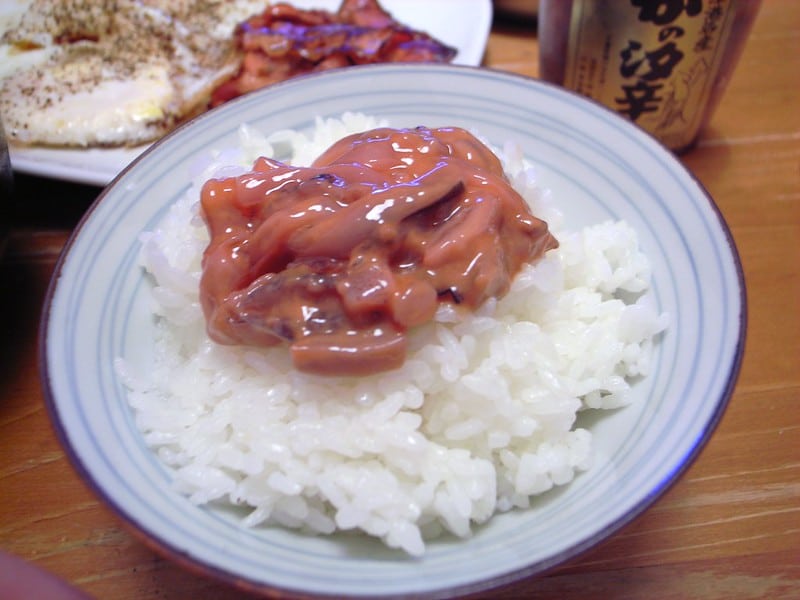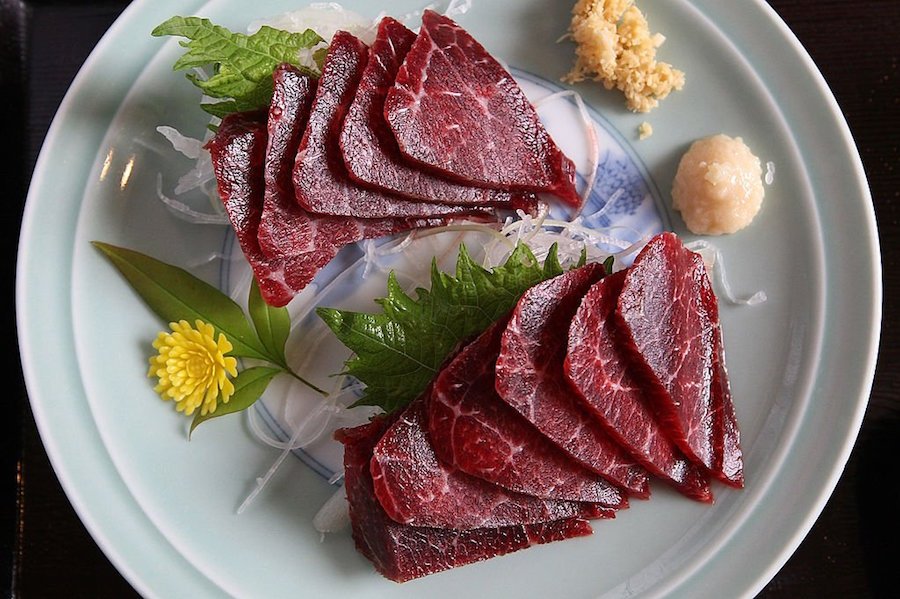Win a Free Trip to Japan!
Experience cherry blossoms and ancient temples
Japan is a country renowned for its rich and diversified culinary scene, but some dishes can leave even the most adventurous eaters astounded. In this blog post, we dive into Japan Weirdest Food that goes beyond the sushi and tempura most are familiar with. Imagine enjoying a bowl of fermented soybeans known as natto, or savoring a delicacy with a surprising origin like shirako. From the crunchy snack of hachinoko to the controversial basashi, these weird Japanese dishes push the boundaries of what many consider edible. Furthermore, the risky fugu, fermented seafood of shiokara, and traditional whale meat dish kujira showcase the extraordinary and bizarre dishes in Japan that offer a taste journey you won’t forget. Join us as we explore these strange Japanese food experiences and what makes them stand out in the world of global cuisine.
Natto: The Fermented Soybeans with a Bold Taste
When it comes to weird Japanese food, Natto often tops the list. This traditional dish, derived from fermented soybeans, is known for its strong flavor and sticky, stringy texture that can be quite polarizing. For those unfamiliar with this culinary delight, here’s what you need to know:
Key Characteristics of Natto
- Texture: Stringy and sticky, often forming strands when stirred.
- Aroma: Pungent and somewhat ammonia-like, which can be off-putting for first-timers.
- Taste: An intense, earthy flavor that is uniquely acquired.
Nutritional Benefits
Natto is not just about uncommon flavors and textures; it offers many health benefits, making it popular among health-conscious individuals in Japan:
- High in protein: A great source of plant-based protein.
- Rich in vitamins: Particularly vitamin K2, essential for bone and heart health.
- Probiotics: Contains beneficial bacteria that aid in digestion.
Traditional Eating Methods
Despite being one of the most odd Japanese food options, there are several traditional ways to enjoy Natto:
- Natto on Rice: Commonly mixed with hot steamed rice and topped with soy sauce and mustard.
- Natto Roll (Natto-Maki): Sushi rolls filled with Natto, often combined with vegetables.
- Natto Toast: A modern twist where Natto is spread on toast, sometimes with cheese.
| Traditional Pairings | Description |
|---|---|
| Rice | Mixed with rice for a balanced meal |
| Sushi | Included in sushi rolls for extra flavor |
| Toast | Spread on toast for a fusion dish |
While Natto may be one of the more bizarre dishes in Japan, its distinctive qualities make it a unique culinary experience. Whether you see it as a daunting challenge or an exciting opportunity, trying Natto is a rite of passage for those exploring the depths of strange Japanese food.
Shirako: A Delicacy with a Surprising Origin
When it comes to weird Japanese food, Shirako is often at the top of the list. Translating to “white children” in Japanese, Shirako refers to the milt, or male fish genitalia containing sperm, from fish like cod, anglerfish, or pufferfish. This strange Japanese food is considered a delicacy and is enjoyed for its creamy texture and subtle flavor. Let’s delve into what makes Shirako a fascinating yet bizarre dish in Japan.
What is Shirako?
Shirako stands out for several reasons:
- Appearance: It resembles white, plump sacs or blobs.
- Texture: Creamy, soft, and often described as custard-like.
- Taste: Mild, slightly oceanic flavor that absorbs the taste of sauces well.
How is Shirako Served?
Shirako can be prepared and served in various ways:
- Raw (Sashimi): Often served as sashimi, where its pure flavor can be appreciated.
- Tempura: Deep-fried for a crispy exterior and creamy interior.
- Hot Pot: Included in hot pot dishes where it absorbs the broth’s flavors.
- Grilled: Lightly grilled to enhance its natural essence.
Nutritional Benefits
Believed to be nutrient-rich, Shirako offers several health benefits:
| Nutrient | Benefits |
|---|---|
| Protein | Essential for muscle growth and repair |
| Omega-3 Fatty Acids | Supports heart and brain health |
| Vitamins | Contains vitamins D and B12 |
Why Try Shirako?
For the adventurous eater, Shirako is a must-try due to its:
- Cultural Significance: It offers a deep dive into bizarre dishes in Japan that are steeped in tradition.
- Unique Experience: The combination of texture and mild taste provides an unparalleled culinary experience.
- Health Benefits: Packed with nutrients, it’s a healthy choice for those daring enough to try.
Whether you’re exploring the realm of odd Japanese food or seeking out the strangest Japanese cuisine, Shirako promises to deliver a memorable gastronomic adventure.
Hachinoko: The Crunchy Insect Snack
When exploring bizarre dishes in Japan, one can’t overlook Hachinoko. This unique delicacy is essentially bee larvae, traditionally enjoyed for its high protein content and distinctive flavor. For the uninitiated, the idea of consuming insect larvae might sound off-putting, but strange Japanese food often carries cultural significance and traditions that make them worth trying.
What is Hachinoko?
- Definition: Hachinoko, literally translating to “bee children,” consists of baby bees, usually larvae or pupae.
- Preparation: Typically, these larvae are harvested from beehives, cooked in soy sauce, sugar, and sometimes sake until they achieve a savory-sweet glaze.
Why Try Hachinoko?
- Nutritional Value: Known for being rich in protein and essential nutrients, Hachinoko provides a healthy option in the realm of weird Japanese dishes.
- Flavor Profile: The taste can be described as nutty and slightly sweet, with a texture that ranges from crunchy to slightly chewy.
- Cultural Experience: Consuming this odd Japanese food allows one to engage in a unique aspect of Japanese culinary tradition.
“When I first tried Hachinoko, I was hesitant. But after one bite, the combination of the sweet soy glaze and the crispy texture left me pleasantly surprised.” – Jane, Food Blogger
Comparisons with Other Foods
| Dish | Main Ingredient | Texture | Flavor Profile |
|---|---|---|---|
| Hachinoko | Bee Larvae | Crunchy | Sweet, Nutty |
| Natto | Fermented Soybeans | Slimy | Strong, Earthy |
| Shirako | Fish Milt | Creamy | Mild, Creamy |
Where to Find Hachinoko
Primarily found in rural areas, Hachinoko is often sold in local markets or offered in traditional eateries. Adventurous food enthusiasts can also find canned versions in specialty stores.
Exploring weird Japanese food like Hachinoko not only broadens your palate but also deepens your understanding of Japan’s diverse cuisine. So, next time you’re in Japan, dare to try Hachinoko and experience a part of the strangest Japanese cuisine!
Basashi: The Controversial Raw Horse Meat
When discussing weird Japanese food, Basashi undeniably stands out as one of the most polarizing dishes. Basashi, or raw horse meat, is often served sashimi-style and has deep cultural roots in Japan’s culinary history. Despite its controversially raw nature, Basashi has garnered a following for its delicate taste and tender texture. Below, we’ll delve into the key aspects of this odd Japanese food that might just challenge your palate.
Key Aspects of Basashi:
| Feature | Description |
|---|---|
| Preparation | Thinly sliced and served raw, often on a bed of ice |
| Flavor | Mild, slightly sweet, and delicate |
| Texture | Soft and tender, with a melt-in-the-mouth quality |
| Accompaniments | Served with soy sauce, grated ginger, and garlic |
| Safety | Must be sourced and prepared by experts to avoid risks |
Cultural Significance:
Basashi holds a special place in Japanese cuisine, especially in regions like Kumamoto, where it is considered a local delicacy. Historically, it was consumed for its high nutritional value and ability to provide sustenance during times of scarcity. Today, it continues to be enjoyed for celebratory dinners and special occasions, symbolizing prosperity and tradition.
Nutritional Benefits:
Despite its notoriety as a strange Japanese food, Basashi offers impressive nutritional benefits. It’s high in protein and low in fat, making it a healthier alternative to many other meat options. Additionally, it’s rich in iron and vitamins, which can contribute to a balanced diet.
How to Enjoy Basashi:
- Restaurants: Seek out reputable establishments specializing in Basashi for the safest experience.
- Pairings: Complement with traditional Japanese sake to enhance the flavor.
- Tastings: Start with small portions to acquaint yourself with its unique taste and texture.
In conclusion, while Basashi may be one of the most bizarre dishes in Japan, it is a culinary adventure worth exploring for those with an adventurous palate. Embrace the intricacies of this strangest Japanese cuisine and experience a facet of Japanese culture that few dare to try.
Fugu: The Risky Pufferfish Cuisine
When it comes to bizarre dishes in Japan, few are as mystifying and potentially perilous as Fugu, the pufferfish cuisine that carries an element of danger. Known for its delicate flavor and unique texture, Fugu is a dish that attracts adventurous eaters from around the world. However, what sets this dish apart is the intricate preparation required to render it safe for consumption.
Key Points About Fugu
To appreciate this weird Japanese dish, understanding a few important aspects is essential:
- Preparation Skills: Only licensed and highly trained chefs are allowed to prepare Fugu. Proper preparation involves meticulously removing toxic parts, particularly the liver, ovaries, and skin, that contain the potent poison tetrodotoxin.
- Safety Regulations: Japan has stringent regulations governing the handling and serving of Fugu. Chefs undergo rigorous training and must pass a difficult certification exam before they are permitted to prepare this meal.
- Flavors and Textures: Fugu meat is celebrated for its mild flavor and slightly chewy texture. It is often enjoyed as sashimi, hot pot (nabe), or even deep-fried.
Fugu Dish Varieties and Safety Facts
| Dish Type | Description | Safety Note |
|---|---|---|
| Sashimi | Thinly sliced raw Fugu served with soy sauce and condiments | Only eat at certified restaurants to ensure safety. |
| Hot Pot (Nabe) | Fugu pieces cooked in a communal pot of broth | Heat helps to neutralize any remaining toxins. |
| Deep-Fried (Karaage) | Fugu chunks battered and fried | Frying adds another layer of safety by cooking thoroughly. |
Why People Take the Risk
The allure of trying Fugu lies not just in the flavor but also in the experience it offers. It’s a culinary adventure, a testament to the chef’s skill, and a unique indulgence that can’t be found just anywhere. This combination of excitement and gastronomy is why Fugu remains one of the most fascinating weird Japanese foods.
Exploring weird Japanese dishes like Fugu offers a window into Japan’s deep-rooted culinary traditions and an opportunity to experience flavors that are as exotic as they are distinctive. As such, this strange Japanese food remains an iconic, if risky, part of the nation’s culinary repertoire.
Shiokara: Fermented Seafood with an Acquired Taste
When it comes to weird Japanese food, few dishes stand out quite like Shiokara. This odd Japanese food is not for the faint of heart, boasting a flavor profile that can be challenging for the uninitiated. But what exactly is Shiokara, and why is it considered among the strangest Japanese cuisine?
What is Shiokara?
Shiokara is a traditional strange Japanese food made from various marine animals. Typically, it consists of raw marine creatures, like squid, heavily salted and fermented in their own viscera. Here’s a breakdown of its common ingredients:
- Squid: The most popular base for Shiokara
- Salt: Used in generous quantities
- Vinegar: Sometimes added for extra tang
- Spices: Occasionally included to vary the flavor
The mixture is then left to ferment for up to a month, developing a pungent aroma and a unique, slimy texture.
“If you can get past the intense fishy flavor, Shiokara offers a truly unique culinary experience.”
Why is Shiokara So Unique?
Shiokara’s distinctive taste is a result of the fermentation process, which breaks down proteins and enhances its umami flavor. Many find the texture and smell challenging, but it’s a beloved delicacy for those who appreciate fermented foods.
Comparison: Shiokara vs. Other Weird Food in Japan
| Dish | Main Ingredient | Texture | Flavor Profile |
|---|---|---|---|
| Shiokara | Squid | Slimy | Very Pungent |
| Natto | Soybeans | Sticky | Strong, Earthy |
| Shirako | Fish Milt | Creamy | Mild, Delicate |
How to Enjoy Shiokara
For those willing to try, Shiokara is best enjoyed in small portions due to its intense flavor. It’s often paired with a shot of shochu or sake to balance its strong taste. Here are some tips:
- Small Servings: Start with a small amount to acclimate your palate.
- Pair with Alcohol: A shot of shochu complements the flavor well.
- Mix with Rice: Dilute its intensity by mixing with warm, plain rice.
Shiokara may be one of the bizarre dishes in Japan, but it offers a rewarding experience for adventurous eaters. If you’re keen to explore odd Japanese food, Shiokara could be the ultimate test of your culinary bravery.
Kujira: The Traditional Whale Meat Dish
Whale meat, known as Kujira, is a traditional dish that has long been a part of Japanese cuisine. In this section, we dive into the rich cultural heritage and culinary aspects of this bizarre dish in Japan.
Cultural Significance
Eating kujira dates back centuries, with whale hunting a significant activity in ancient Japan. Whale meat provided a vital source of protein during times when other meats were scarce. Today, kujira continues to hold cultural importance, even though its consumption sparks controversy worldwide.
Preparation and Taste
Kujira can be prepared in multiple enticing ways:
- Tatsuta-age: Whale meat marinated in soy sauce and ginger, then deep-fried.
- Sashimi: Thinly sliced raw whale meat, often served with soy sauce and wasabi.
- Bacon: Whale meat cured and sliced like traditional bacon.
- Steaks: Grilled or pan-seared for a rich, meaty texture.
Each preparation method offers a unique flavor profile, ranging from the subtle and tender taste of sashimi to the robust and hearty flavor of grilled steaks.
Nutritional Perspective
While kujira is rich in protein and low in fat, it also contains high levels of mercury, which can pose health risks. Therefore, moderation is key when consuming this strange Japanese food.
Controversial Aspects
The consumption of whale meat is subject to international debate, largely due to conservation concerns:
| Proponents’ Arguments | Opponents’ Arguments |
|---|---|
| Cultural heritage | Ethical and ecological considerations |
| Sustainability claims | Conservation and animal rights |
| Economic factors | Health risks due to mercury |
In summary, kujira is one of the most odd Japanese foods, deeply rooted in tradition yet wrapped in modern-day controversies. Its unique flavor and preparation methods make it a truly unique experience for those daring enough to try.
Frequently Asked Questions
What are some unusual dishes one might encounter in Japan?
Japan is known for its diverse and sometimes unconventional cuisine. Some of the most unusual dishes include Shirako, which are fish sperm sacs, and Ikizukuri, a dish where the fish is served alive. Another interesting dish is Natto, fermented soybeans known for their sticky texture and strong odor.
Is it safe to eat these unusual Japanese foods?
Yes, these foods are generally safe to eat and are prepared according to strict health and safety standards. Many of these dishes have been consumed for generations and are part of the traditional Japanese diet. However, it’s always good to ensure that the food is prepared by a reputable restaurant or vendor.
Why do people in Japan eat these unusual foods?
Many of these unique foods are rooted in Japanese culture and history. For example, Shirako and Ikizukuri are considered delicacies and are often enjoyed for their unique textures and flavors. Additionally, Japanese cuisine values the use of local and seasonal ingredients, which can sometimes lead to the inclusion of unusual items on the menu.
Can tourists easily find and try these unusual Japanese dishes?
Yes, tourists can find these dishes in various places throughout Japan, though some might be more commonly available in specific regions or specialty restaurants. High-end sushi and kaiseki (traditional multi-course Japanese dinner) restaurants often feature these unique items. However, it’s good practice to research or ask for recommendations to ensure a memorable and enjoyable culinary experience.
